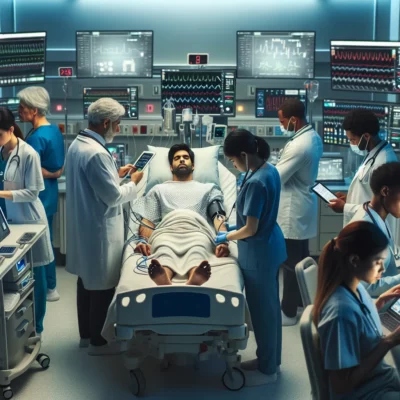In a world where information is at our fingertips, the healthcare industry is undergoing a transformation driven by real-time updates. These updates are revolutionizing patient care, offering unprecedented opportunities for healthcare providers and patients alike. Let’s delve into the power of real-time updates and how they’re reshaping the healthcare landscape.
Understanding Real-Time Updates in Healthcare
Real-time updates refer to the instantaneous exchange of data, allowing for immediate access to information as it is generated. In healthcare, this means that patient data, such as vital signs, medication adherence, and other critical health metrics, can be monitored and analyzed in real-time. This instant access to information is made possible by cutting-edge technologies like wearables and Internet of Things (IoT) devices.
Wearables, such as smartwatches and fitness trackers, continuously collect data on a patient’s heart rate, activity levels, sleep patterns, and more. IoT devices, which include connected medical devices like glucose monitors and smart inhalers, further enhance this data collection by providing continuous streams of information. These technologies work in tandem to create a comprehensive picture of a patient’s health, enabling healthcare providers to make informed decisions quickly.
Enhancing Treatment Monitoring
One of the most significant benefits of real-time updates is the ability to continuously monitor patient vitals. This constant stream of data allows healthcare providers to detect changes in a patient’s condition immediately. For instance, if a patient’s heart rate spikes or blood sugar levels drop dangerously, alerts can be sent to healthcare providers, enabling them to intervene promptly.
Immediate access to data also allows for dynamic adjustments to treatment plans. Healthcare providers can tailor treatments based on the latest data, ensuring that patients receive the most effective care possible. This agility in treatment management can lead to better health outcomes, as interventions can be made before conditions worsen.
Improving Care Management
Real-time updates play a crucial role in enhancing care management by facilitating better coordination among healthcare teams. When all team members have access to the same up-to-date information, they can collaborate more effectively, reducing the risk of miscommunication and errors.
Moreover, real-time data supports personalized patient care and decision-making. By analyzing continuous data streams, healthcare providers can identify patterns and trends unique to each patient. This personalized approach allows for more precise treatment plans and can significantly improve patient satisfaction and outcomes.
Empowering Patients with Information
Real-time updates are not just beneficial for healthcare providers; they also empower patients by providing them with immediate insights into their health status. With access to their health data, patients can better understand their conditions and take an active role in managing their health.
This empowerment has psychological benefits as well. Patients who feel more in control of their health are often more motivated to adhere to treatment plans and make healthier lifestyle choices. The knowledge that they can monitor their health in real-time can reduce anxiety and increase confidence in managing their conditions.
Reducing Emergency Situations
The proactive nature of real-time monitoring can preemptively identify potential health crises before they escalate into emergencies. For example, continuous monitoring of a heart patient’s vitals can detect irregularities that may signal an impending cardiac event, allowing for timely intervention.
This proactive approach can significantly reduce hospital readmissions and emergency room visits. By addressing issues before they become critical, healthcare systems can improve patient outcomes while also reducing the strain on emergency services and hospital resources.
Future of Real-Time Updates in Healthcare
As technology continues to advance, the future of real-time updates in healthcare looks promising. We can expect further integration of artificial intelligence and machine learning algorithms to analyze real-time data, providing even more accurate predictions and insights.
However, integrating real-time updates into broader healthcare systems presents challenges. Issues such as data privacy, security, and interoperability must be addressed to ensure that these technologies are implemented safely and effectively. Healthcare providers and technology developers must work together to overcome these hurdles and fully realize the potential of real-time updates.
Real-time updates are transforming patient care by providing immediate access to critical health data. From enhancing treatment monitoring to empowering patients and reducing emergency situations, the benefits are vast and varied. As we look to the future, the continued evolution of these technologies promises to further revolutionize healthcare, making it more efficient, personalized, and responsive than ever before.
